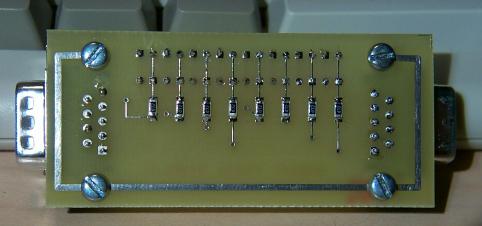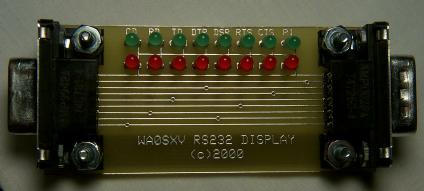RS232 Display Board
While trying to debug some CI-V to RS232 interfaces and other ham projects that connected to the serial port on the computer, I grew frustrated trying to determine whether they were even talking to the serial port. After one particularly annoying session trying to get my PTC-II downloaded from my laptop, only to discover that the serial port had to have the modem leads turned on, I decided to buy a signal display for RS232. Off to Radio Shack.
Unfortunately, I didn't find anything suitable. Since I've started designing my own PC boards recently and since I wanted to play with surface-mount technology (smt), I decided to build a simple RS232 signal display board to show all signals.
Note: Click on the picture to receive a magnified view.
Components are off the shelf from DigiKey and cost around ten dollars.
Constructions details are here.
Visitor number


